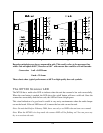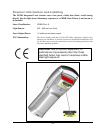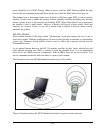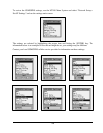
15
points should be set for MAC filtering. When an access point has MAC filtering enabled, the only
devices that can communicate through them are the ones which the MAC address has been set.
The primary issue is that many current users of wireless LAN have opted NOT to turn on security
features. If users were to enable the security features currently available (including only allowing
known systems access to the network and enabling WEP (Wired Equivalent Privacy) encryption
the intruder's work is much harder. Much as a burglar will bypass a house whose doors and
windows are securely locked, so too will a hacker tend to bypass a network where security
measures are enabled.
Ad-Hoc Mode
Most installed wireless LANs today utilize "infrastructure" mode that requires the use of one or
more access points. With this configuration, the access point provides an interface to a distribution
system (e.g., Ethernet), which enables wireless users to utilize the corporate network and the
CommandLink server.
As an optional feature, however, the 802.11b standard specifies "ad-hoc" mode, which allows the
radio network interface card (NIC) to operate in what the standard refers to as an independent
basic service set (IBSS) network configuration. With an IBSS, there are no access points. User
devices communicate directly with each other in a peer-to-peer manner.
This illustration shows the M7100 handheld terminal using Ad-hoc mode.
The next illustration shows the M7100 handheld terminal in a typical wireless network.


















